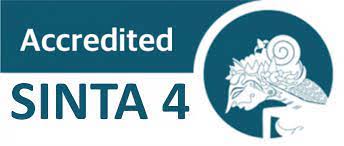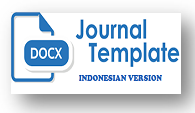Optimasi Infrastruktur Wi-Fi dan Manajemen Bandwidth di Sekolah Menengah Pertama Menggunakan Teknologi Mikrotik
DOI:
https://doi.org/10.29240/arcitech.v5i1.12408Keywords:
Wi-Fi Optimization, Network Infrastructure, Bandwidth Management, Educational InstitutionsAbstract
The increasing demand for reliable and high-performance Wi-Fi networks in educational institutions necessitates efficient infrastructure management. However, many schools still face issues such as poor signal strength and inefficient bandwidth allocation. This study aims to optimize Wi-Fi network infrastructure and bandwidth management using Mikrotik technology, addressing these limitations through strategic access point (AP) placement, Queue Tree-based bandwidth allocation, and real-time monitoring. A mixed-methods approach was used, combining quantitative performance measurements and qualitative user feedback. Results show significant improvements, with signal strength increasing from -83 dBm to -34 dBm, download speeds reaching 41.52 Mbps, and reduced latency in high-traffic areas. These findings suggest that proper infrastructure design and bandwidth management strategies can enhance network stability and efficiency in educational environments. This study contributes to the field by providing a practical model for Wi-Fi optimization in schools, potentially benefiting similar institutions globally.
Downloads
References
Asyifah, N., & Ramayanti, D. (2024). Optimasi Kinerja Jaringan di SMK Al Fudhola Bekasi: Pengaturan Bandwidth Dengan Mikrotik RB 951UI-2HND dan Penerapan Algoritma Simple Queue. Jurnal Ilmiah ILKOMINFO-Ilmu Komputer & Informatika, 7(1), 33-46.
Callahan, S. T., Winitzer, R. F., & Keenan, P. (2014). Transition from pediatric to adult-oriented health care: A challenge for patients with chronic disease. Current Opinion in Pediatrics, 26(4), 403-409. https://doi.org/10.1097/MOP.0000000000000094
Frianto, D., & Ramayanti, D. (2024). Analisis Perbandingan Label Distribution Protocol (LDP) dan Traffic Engineering (TE) pada Jaringan Backbone MPLS di PT Iforte Solusi Infotek. JATI (Jurnal Mahasiswa Teknik Informatika), 8(4), 7787-7794.
Kurose, J. F., & Ross, K. W. (2021). Computer Networking: A Top-Down Approach (8th ed.). Pearson.
Martinez-Martin, E., & Costa, A. (2021). Assistive technology for elderly care: An overview. IEEE Access, 9, 36551-36561. https://doi.org/10.1109/ACCESS.2021.3092407
Mikrotik. (2021). Quality of Service (QoS) Configuration Guide. Retrieved from https://www.mikrotik.com
Pratama, G. A., & Santoso, H. B. (2021). Efisiensi Penggunaan Bandwidth pada Institusi Pendidikan dengan Fitur Queue Tree pada Mikrotik. Jurnal Teknologi Informasi, 12(2), 98-110.
Putra, M. P., & Sari, A. W. (2022). Integrasi Manajemen Bandwidth dengan Monitoring Real-Time Menggunakan Aplikasi Berbasis Open-Source. Jurnal Sistem Informasi, 14(1), 45-57.
Rahman, A., & Wibowo, R. A. (2020). Implementasi QoS pada Jaringan Wi-Fi untuk Mendukung Pembelajaran Daring. Jurnal Informatika dan Teknologi, 11(3), 56-65.
Ramayanti, D. (2024). Analisis dan Peningkatan Kualitas Layanan pada Jaringan Komputer Nirkabel Badan Penghubung Lampung dalam Mendukung Tugas Pemerintahan. JSAI (Journal Scientific and Applied Informatics), 7(1), 1-13.
Rute-Pérez, S., Santiago-Ramajo, S., Hurtado, M. V., Rodríguez-Fórtiz, M. J., & Caracuel, A. (2014). Challenges in software applications for the cognitive evaluation and stimulation of the elderly. Journal of NeuroEngineering and Rehabilitation, 11, 88. https://doi.org/10.1186/1743-0003-11-88
Tanenbaum, A. S., & Wetherall, D. J. (2020). Computer Networks (6th ed.). Pearson.
Syahindra, Wandi, Murlena Murlena, and Hasni Hartati. 2020. “Pemodelan Implementasi Open Access Repository Menggunakan Eprints Software Di IAIN Curup”. Khizanah Al-Hikmah : Jurnal Ilmu Perpustakaan, Informasi, Dan Kearsipan 8 (1), 56-70. https://doi.org/10.24252/kah.v8i1a6.
Zibaltar, T., & Ramayanti, D. (2024). Analisis Kualitas Jaringan Internet di Gedung Guntur: Studi Kasus pada Tenant Call Center PT Jasnita Telekomindo. JSAI (Journal Scientific and Applied Informatics), 6(3), 310-320.
Downloads
Published
How to Cite
Issue
Section
Citation Check
License
Copyright (c) 2025 Desi Ramayanti, Vega Saputra

This work is licensed under a Creative Commons Attribution-NonCommercial-ShareAlike 4.0 International License.
Authors who publish with Arcitech: Journal of Computer science and Artificial Intelligence agree to the following terms:
- Authors retain copyright and grant the journal right of first publication with the work simultaneously licensed under a Creative Commons Attribution-NonCommercial-ShareAlike 4.0 International License (CC BY-NC-SA 4.0) that allows others to share the work with an acknowledgment of the work's authorship and initial publication in this journal.
- Authors are able to enter into separate, additional contractual arrangements for the non-exclusive distribution of the journal's published version of the work (e.g., post it to an institutional repository or publish it in a book), with an acknowledgment of its initial publication in this journal.
- Authors are permitted and encouraged to post their work online (e.g., in institutional repositories or on their website) prior to and during the submission process, as it can lead to productive exchanges, as well as earlier and greater citation of published work (See The Effect of Open Access).













